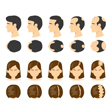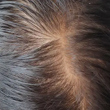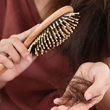Hair Loss Myths Debunked
Hairfall or hair loss is a common condition that occurs in both men and women. Some common conditions include autoimmune diseases, diet, hormonal changes, and stress or anxiety. However, some people have inadvertently believed a few hairfall myths that are precisely what they are - myths. Here’s a look at a few common ones.
4 Common Hair Fall Myths
Typically, natural hair loss is a part of three cycles. Humans shed around 50 to 100 strands of hair each day. This process allows healthy hair to grow from the hair follicles after damaged hair has been shed.

The problem arises when hairfall is consistent and is shed in a higher volume. Read on to discover the common hairfall myths and how to be sure if you’re experiencing a natural condition.
Myth 1: Only Men Experience Hairfall
As mentioned earlier, hairfall is common in both men and women. Generally, men who experience hairfall have reached their middle ages. Similarly, women experience hairfall after reaching the age of 40.
Women also experience hairfall when they have recently given birth, use harsh chemicals or expose their hair to extreme heat (hairdryer/hair straightener/etc.) or if they’re going through treatments like chemotherapy.
Myth 2: Hair Fall is a Product of Being Careless
Carelessness being a contributor to hair loss is one of the common hairfall myths. Being careless may impact hairfall, but it is not the only reason that causes it. Causing factors include harmful chemicals, stress, diet, and other reasons.
Losing a few strands of hair is natural to make room for the growth of healthy hair. However, it is recommended to take care of hair by washing it periodically and treating it professionally at least once a quarter.
Myth 3: Hairfall Represents an Underlying Medical Condition
Autoimmune diseases like alopecia areata are a common factor of hairfall. There may be other diseases that impact hairfall but do not necessarily cause it. They are also not the sole reason for hairfall in either men or women.
For the most part, genetics play an essential role when it comes to hairfall. Some people are gifted with good hair follicles, while some are not. Apart from that, some mild conditions can impact hairfall. These include adverse drug reactions, taking ill-advised supplements, change in the daily diet, or nutritional deficiencies.
However, there are a few life-threatening conditions that can cause hairfall as well. These include infections, endocrine abnormalities, and malignancy.
Myth 4: Higher Testosterone Levels Causes Hairfall
Since hairfall is common in men during their middle ages, higher testosterone levels are believed to be its cause. However, it is not necessarily true. Lower circulating levels of testosterone are found to be the cause of hairfall.
This becomes the case when testosterone is converted to Dihydrotestosterone (DHT) by higher enzyme levels. On the other hand, genes play a crucial role in hair sensitivity towards DHT or testosterone. Higher sensitivity causes hairfall, while a lower sensitivity will have no effect.
What are the Signs of Hair Fall?
Hairfall is a gradual process and doesn’t happen overnight. Hence, it is easy to catch it early on and rule out the possible reasons behind it. Ignoring the common hairfall myths, one needs to pay attention to the volume of hair loss.
As mentioned earlier, losing a few strands of hair is natural and completely fine. It becomes a cause of concern when the volume of hair loss is more significant than usual. These can be checked while brushing the hair or checking the pillows in the morning. Losing strands of hair while applying shampoo is expected as well.
Another way to check for signs of hairfall is to pay attention to the quality of the hair. If the hair starts thinning or patches appear on the head with a lower hair volume, get help immediately.
Conclusion
To summarize, many hair fall myths are circulating both offline and online. One should not believe it and do proper research. Get help immediately by consulting a dermatologist to find the exact condition behind hair loss. Doing so helps to prevent irreversible results later on in life. Many hair loss conditions can be treated if they're detected early on. Hence, keep a close eye on yourself to ensure you're aware of what you're going through.
Myth Busters HairFall

Androgenetic Alopecia - Everything You Need To Know
Have you been experiencing excessive hair fall over a prolonged period of time? It could be an early sign of androgenetic alopecia. It is a hair loss disorder common in both genders and can lead to progressive thinning and even baldness in some patients if not caught and treated early.

How To Make Hair Grow Faster For Men
A head full of healthy hair is a matter of confidence. Hair has its own mechanism of growing and shedding, and it is when this mechanism is thrown off that growth is hindered. Especially in the case of males, hair growth faces a lot of hiccups that can easily be managed.

Female Pattern Baldness - Causes & Treatments
Have you suddenly noticed an increase in the number of hair strands on your pillow in the morning? Or is your ponytail getting thinner by day? Well, you might be suffering from female pattern baldness. While that does sound scary, identifying it early on is key to treating this condition effectively. So keep reading to know what this is, how you can identify it, and most importantly, what treatments you can avail of to get your beautiful lustrous hair back.

What Are The Reasons For Hairfall?
Almost everyone experiences some amount of hair thinning over the years. Shedding around 50 to 100 single strands of hair per day is considered normal. However, losing more than 150 strands a day, experiencing sudden thinning, or developing circular bald patches on your scalp are reasons for concern. Hair loss occurs when new hair doesn’t grow fast enough to replace the amount of hair you lose daily. Hair can fall due to various reasons, with hereditary hair loss and poor nutrition being the most common hair fall reasons.

Expert Approved Tips For Hair Growth
What can be more debilitating than seeing hundreds of hair strands shedding from your scalp every time you brush your hair? Also, excessive molting occurs during seasonal changes that can be very stressful for you. Although it’s okay to lose between 50-100 strands every day, according to the American Academy of Dermatology, the problem occurs when you start shedding more than normal. But that doesn’t mean you have to feel helpless as there are ways to grow your hair back. Even if you are coping with baldness or alopecia, certain hair growth tips from dermatologists can come to your rescue. Read on to discover how these tips can be your savior when abnormal hair fall problems are in sight.
Trending Videos
+ 6 Sources
LMRC - GGI-CO-A2-DMA-300026127-300026127-WM-J21-282
© 2021 Dr. Reddy’s Laboratories Ltd. All rights reserved.